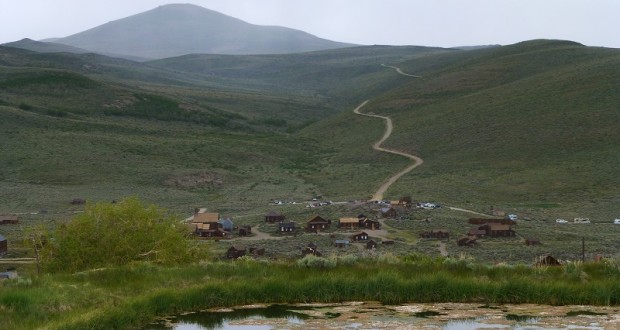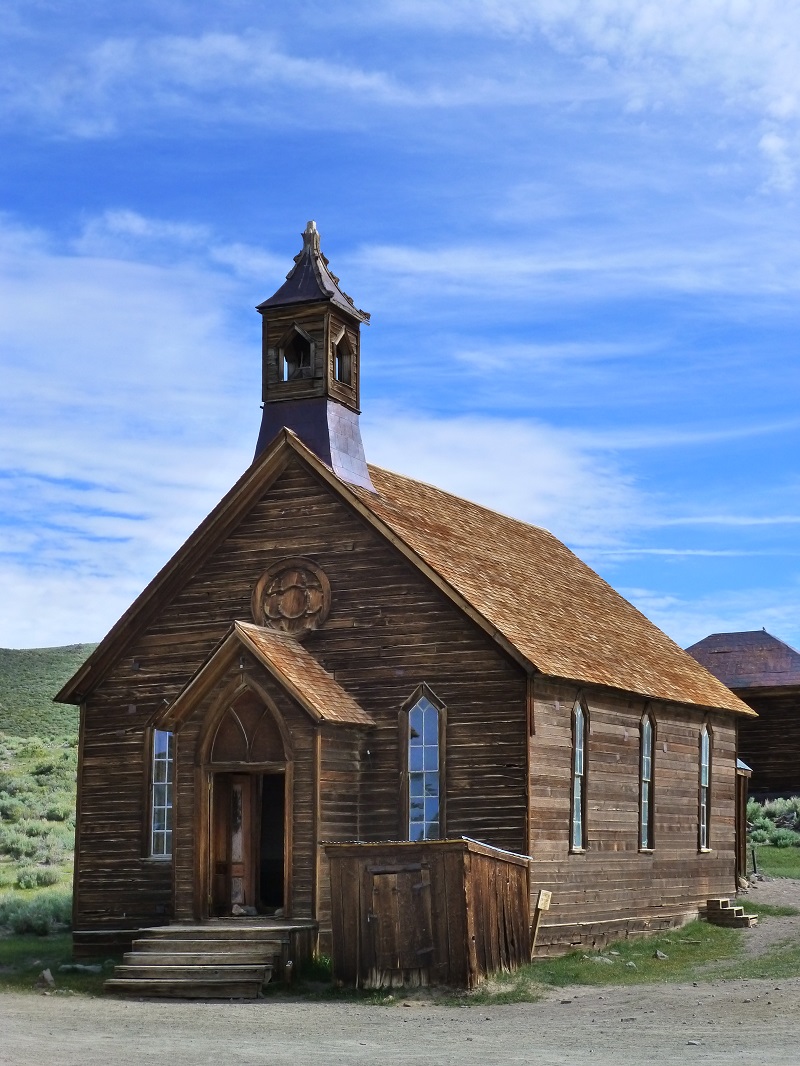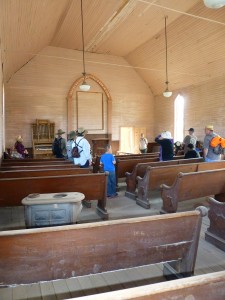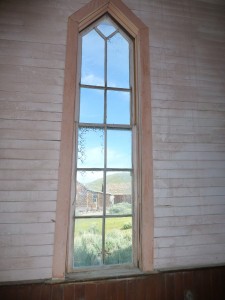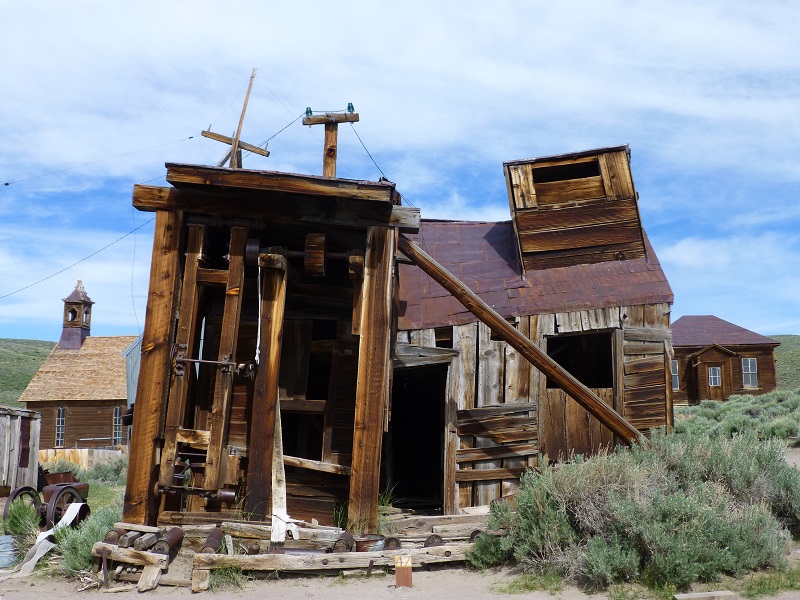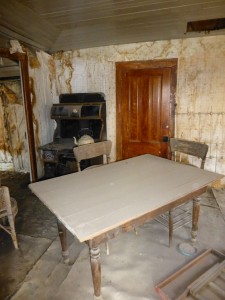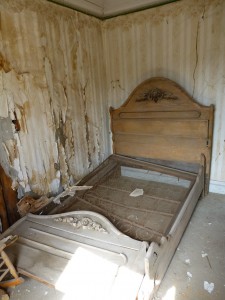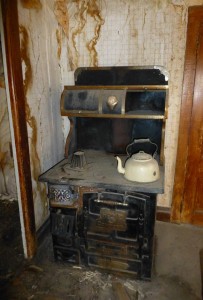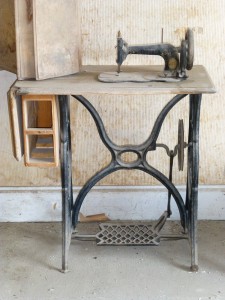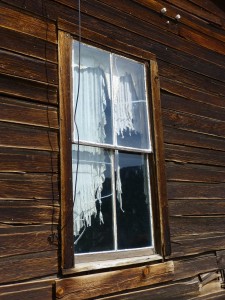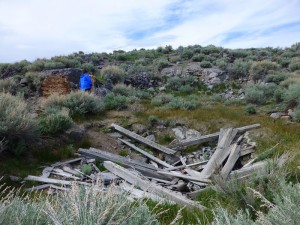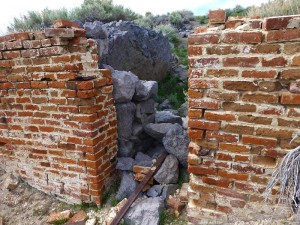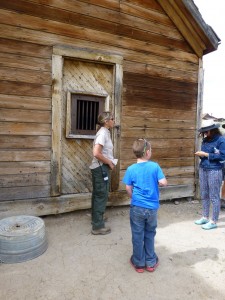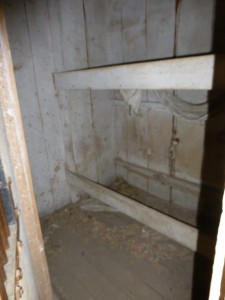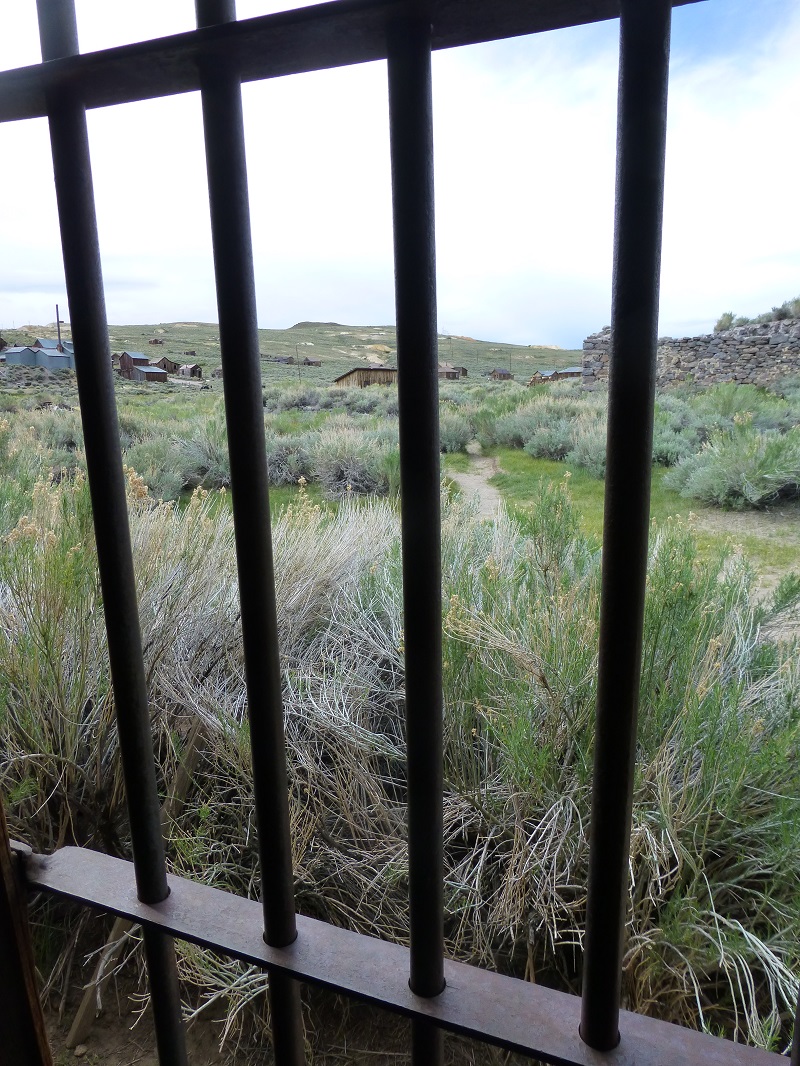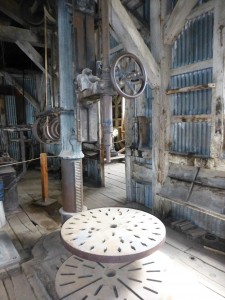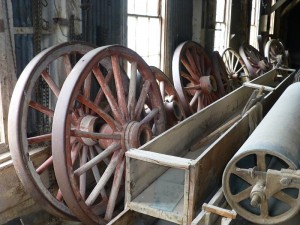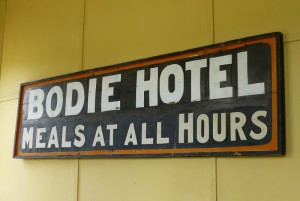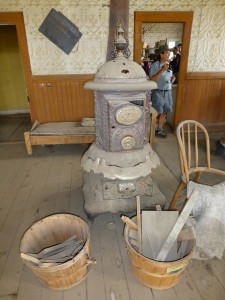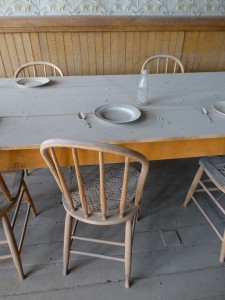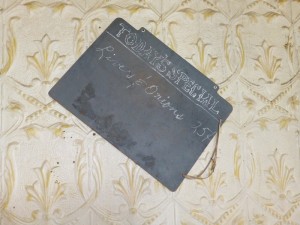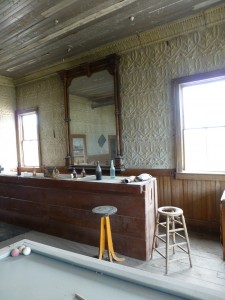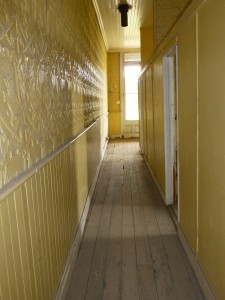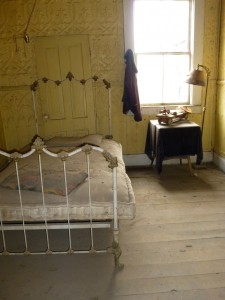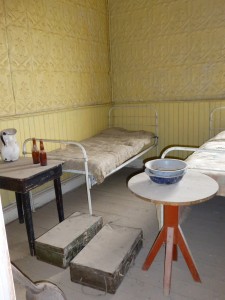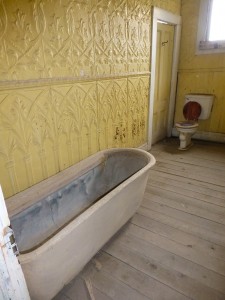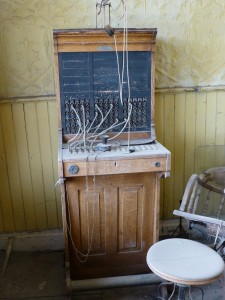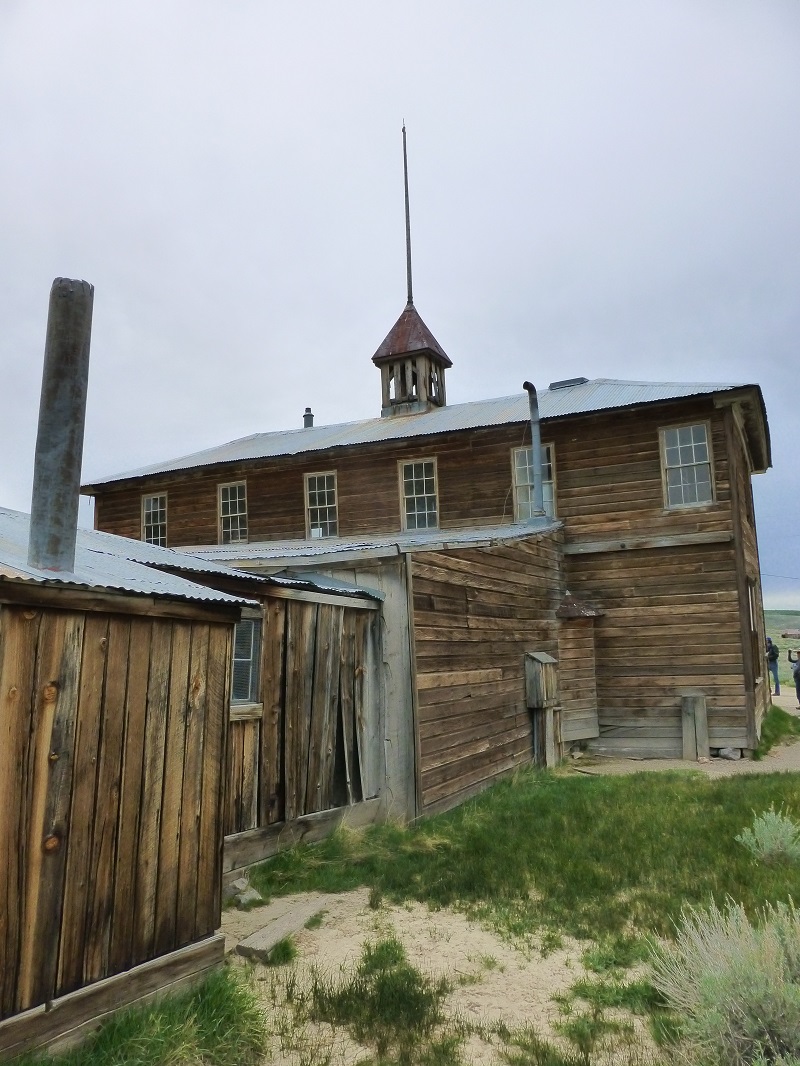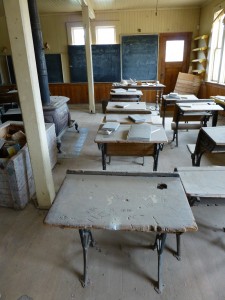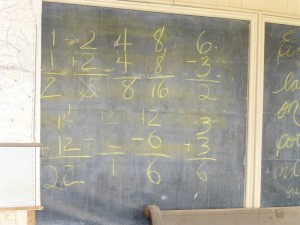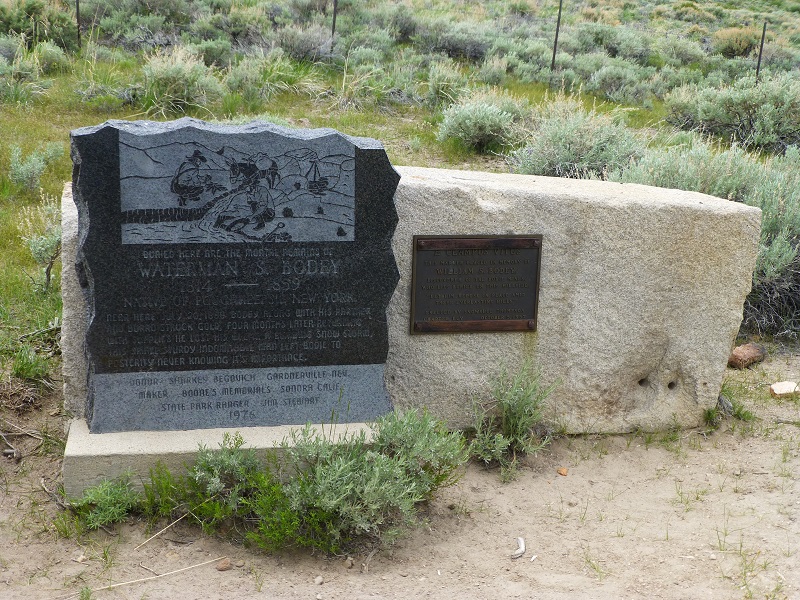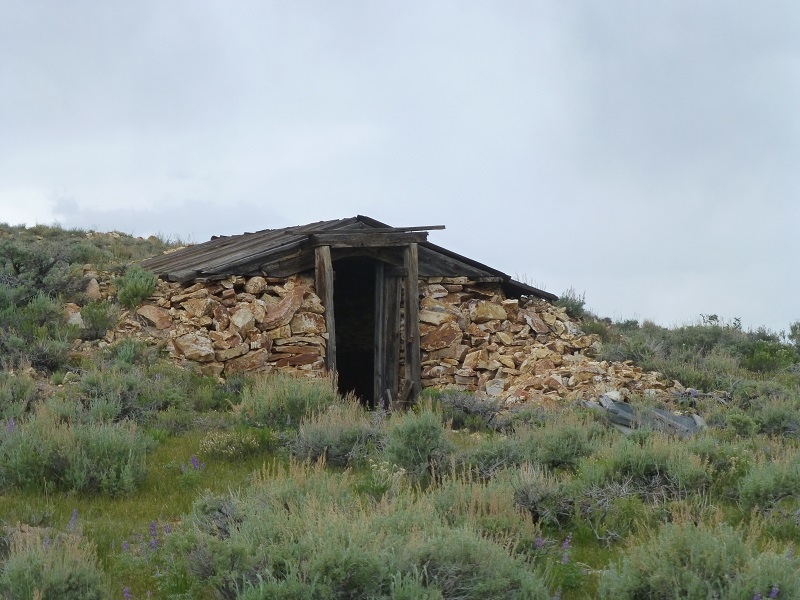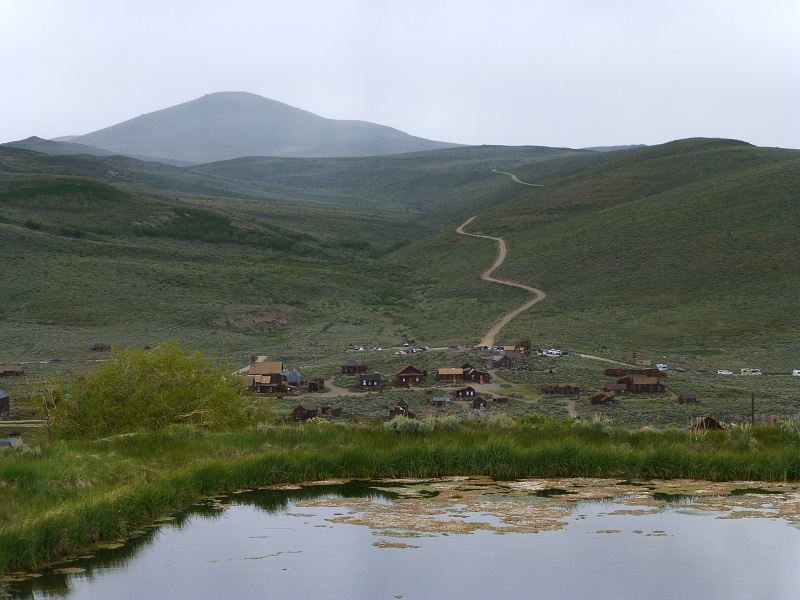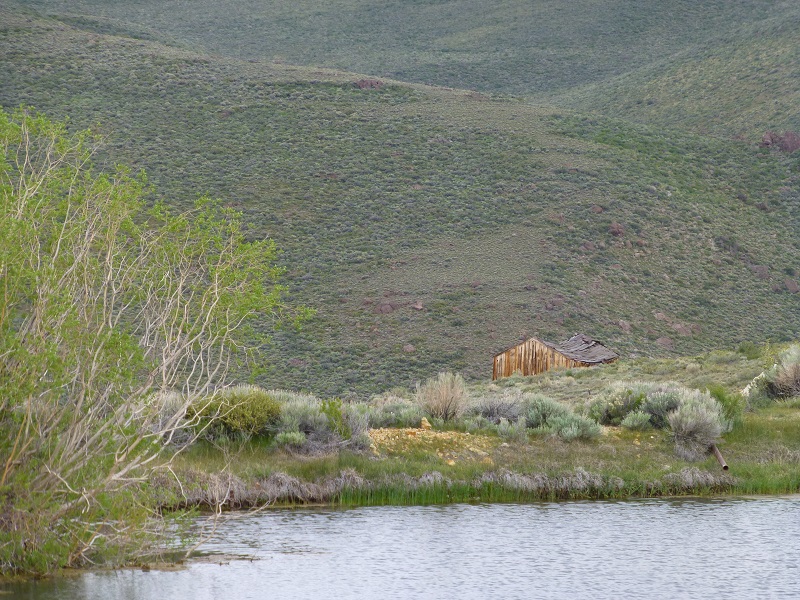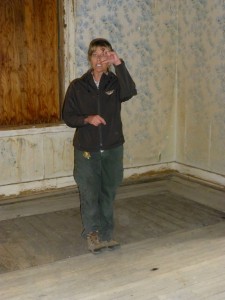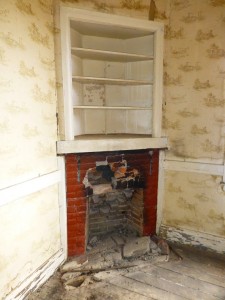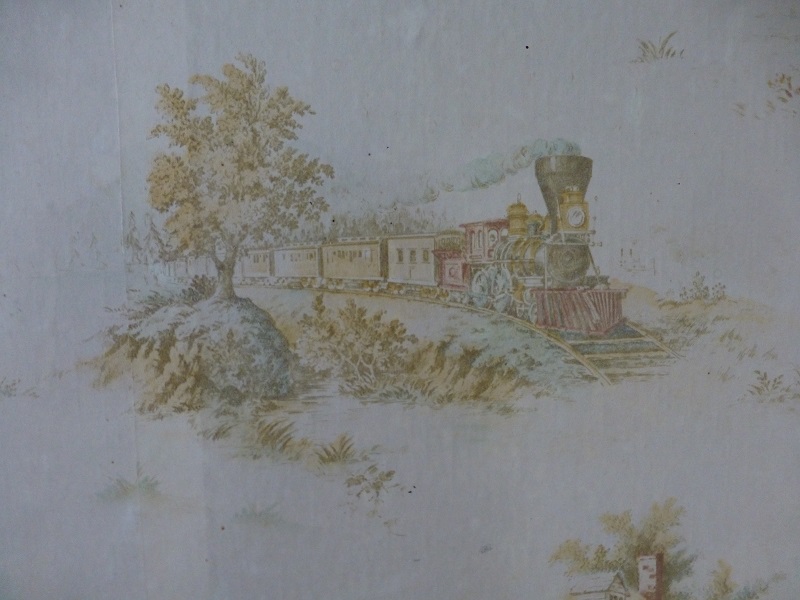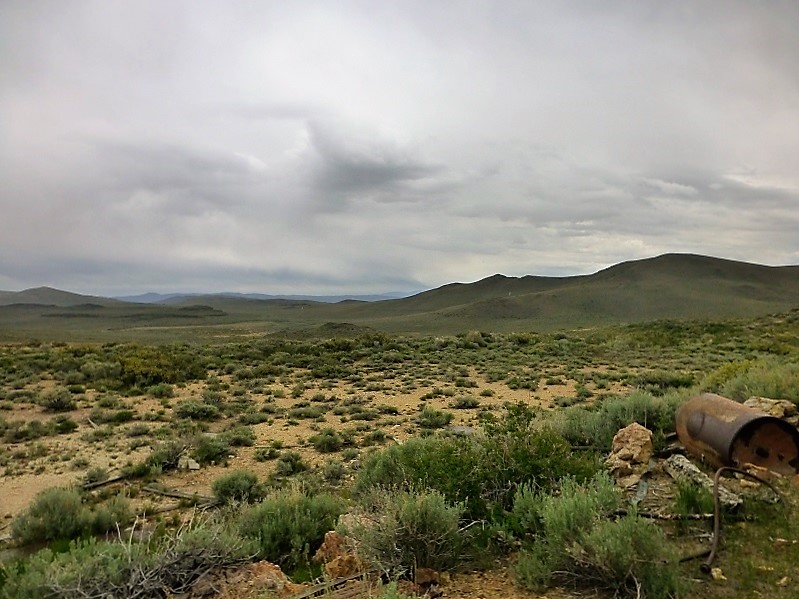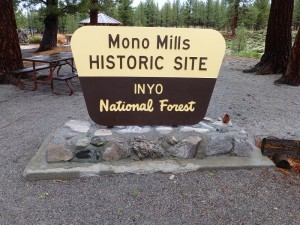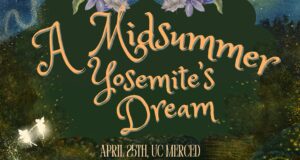I had a rare treat to participate in a special tour of Bodie, with the local historian behind doors of old buildings that are closed to the general public.
Where: Bodie State Historic Park
Difficulty: Easy
When: June 12, 2016
I spent the night in Bridgeport and headed south on Hwy 395 to Hwy 270, following the paved road and signs to Bodie. The road ran along beautiful meadows that were loaded with wild Iris.
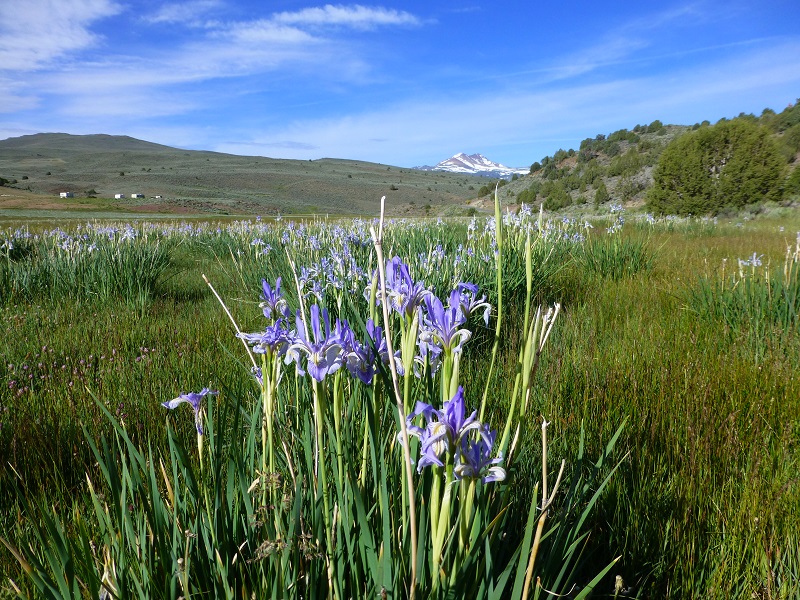 Then I spotted a herd of sheep across the meadow and the flock sure stood out against those green hills.
Then I spotted a herd of sheep across the meadow and the flock sure stood out against those green hills.
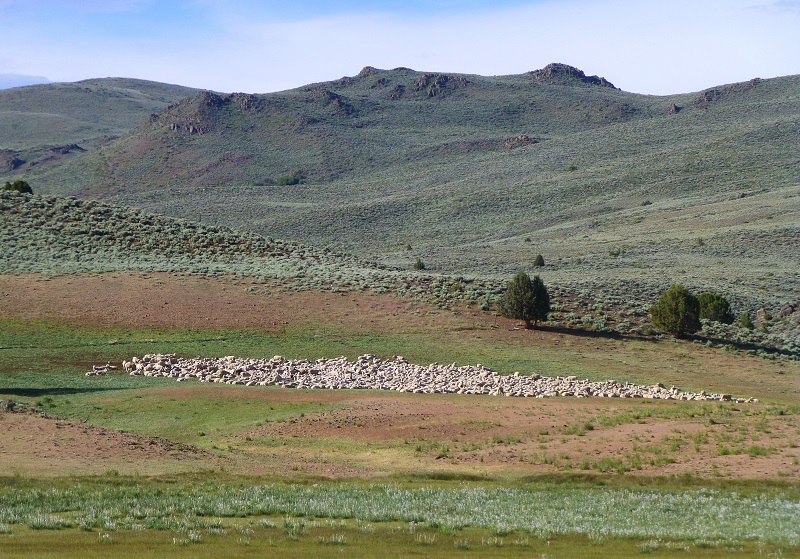 The road had turned to gravel and dirt as I headed down the final stretch into Bodie and I could feel myself being transported back in time.
The road had turned to gravel and dirt as I headed down the final stretch into Bodie and I could feel myself being transported back in time.
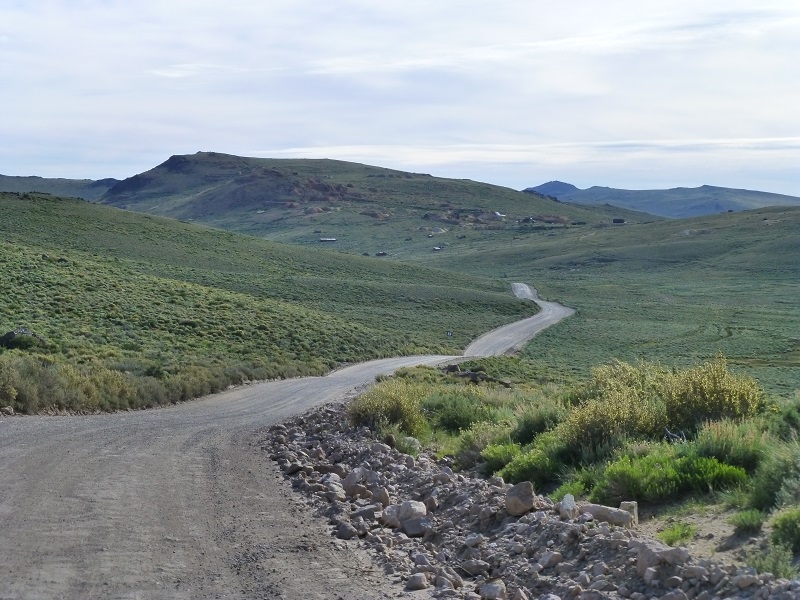 There are several ways that you can tour Bodie. You can tour on your own, using the brochure to help identify the buildings and their history. You can join one of the free history talks while you are there. You can arrange for a Private Tour or they offer a few two day tours each year called Heritage Tours. I signed up for one of these Heritage Tours that was scheduled to visit the old nearby mining Ghost Town named Masonic on the second day, following the old wagon road that was used at the time. Unfortunately weather happened. Snow was starting at the beginning of that second day and dirt roads that would take us to Masonic were very slick, so that part of the tour was cancelled for the safety concerns. I do feel very fortunate to have received that tour of Bodie on the first day by historian Terri Geissler as she led us through the town, opening up building for us to walk inside and sharing the special history related to these building.
There are several ways that you can tour Bodie. You can tour on your own, using the brochure to help identify the buildings and their history. You can join one of the free history talks while you are there. You can arrange for a Private Tour or they offer a few two day tours each year called Heritage Tours. I signed up for one of these Heritage Tours that was scheduled to visit the old nearby mining Ghost Town named Masonic on the second day, following the old wagon road that was used at the time. Unfortunately weather happened. Snow was starting at the beginning of that second day and dirt roads that would take us to Masonic were very slick, so that part of the tour was cancelled for the safety concerns. I do feel very fortunate to have received that tour of Bodie on the first day by historian Terri Geissler as she led us through the town, opening up building for us to walk inside and sharing the special history related to these building.
Bodie officially became a State Historic Park and part of the State Park system in 1962. Bodie is an original mining town from the late 1800’s and what we see that is left today in managed in a state of “arrested decay.” So what does that term mean? It means that the structures will be maintained, but only to the extent that they will not be allowed to fall over or otherwise deteriorate in a major way. Any building that was standing in 1962 when Bodie became a State Park, may be rebuilt or preserved as the photographs of 1962 showed them. By putting new roofs on the buildings, rebuilding foundations, and resealing glass that is in window frames, the State is able to keep buildings from naturally decaying. That is where the Bodie Foundation comes in, the people whom I arranged the tour with. They were formed back in 2008, are a 501 Non Profit organization and their mission is dedicated to the preservation, interpretation, and public enjoyment of Bodie State Historic Park, Mono Lake Tufa State Natural Reserve, and Grover Hot Springs State Park. They operate the Bodie Visitor Center and Museum. They have helped fund several preservation projects at Bodie, along with seasonal staffing to provide interpretive programs and maintenance. I wanted to share this information because that is where my fee for my tour went and it is a wonderful cause. I have a link at the end to their website where you can learn more about the projects they are doing and how you can help.
In 1859 William S. Bodey discovered gold near what is now called Bodie Bluff. A mill was established in 1861, the people started to arrive and the town grew. It started with about 20 miners and expanded to an estimated 10,000 people by 1880. When the town of Bodie was at its height, it was a happening place comprised of families, robbers, miners, store owners, gunfighters, prostitutes and people from all over the world. At one time there was reported to be 65 saloons in town. Among the saloons were numerous brothels, gambling halls and opium dens.
The boom came and went. On the 1910 census, the population had dwindled down to 698 people and the last newspaper was printed in 1912. In 1913, the Standard Consolidated Mine closed. James S. Cain was buying up everything from the town lots to the mining claims, and reopened the Standard mill to former employees, which resulted in an over $100,000 profit in 1915. However, this financial growth was not in time to stop the town’s decline. In 1917, the Bodie Railway was abandoned and its iron tracks were scrapped. The last mine closed in 1942, due to War Production Board Order L-208, shutting down all nonessential gold mines in the United States. Mining never resumed. By 1920, Bodie’s population was recorded by the US Federal Census at a total of 120 people. Despite the decline, Bodie had permanent residents through most of the 20th century, even after a fire ravaged much of the downtown business district in 1932. A post office operated at Bodie from 1877 to 1942.
I met up with our group and our leader Terri Geissler at the Visitor Parking. She lined us out on the day’s itinerary.
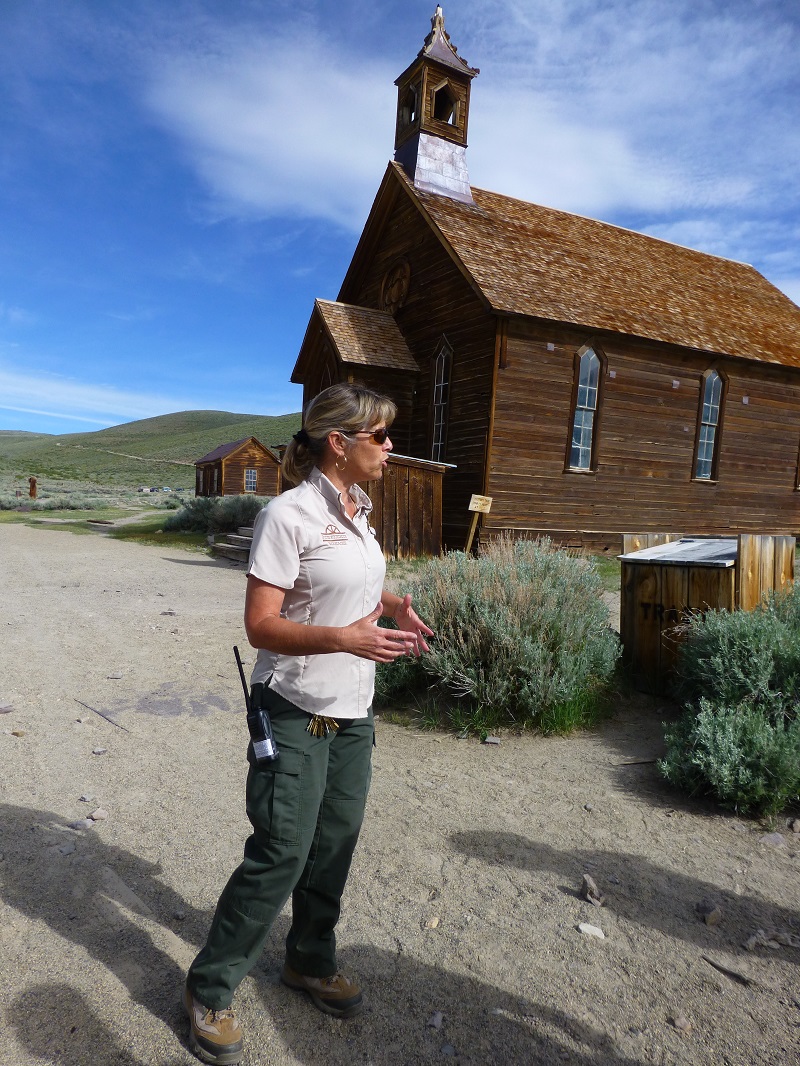 Our first stop was the Methodist Church, one of two churches that were in town, but the only one left today. The Catholic Church was destroyed in a fire in 1928. There were no churches in Bodie until 1882 when this church was built, but there were preachers who held services in private homes and other buildings. One of the interesting things that I learned is that although the glass windows in the church had a type of design to the glass, they were not stained glass but the material was inlaid in the glass when it was created.
Our first stop was the Methodist Church, one of two churches that were in town, but the only one left today. The Catholic Church was destroyed in a fire in 1928. There were no churches in Bodie until 1882 when this church was built, but there were preachers who held services in private homes and other buildings. One of the interesting things that I learned is that although the glass windows in the church had a type of design to the glass, they were not stained glass but the material was inlaid in the glass when it was created.
We wandered up the streets, checking out buildings along the way.
Terri would open up some of the houses for us to take our trip back in time. It was almost as if the people had left a short time back and were planning to come back. This house is known as the Cameron House.
We headed up to King Street, which is the area where the Chinese lived and worked. They had their own general stores, laundries, boarding house, gambling halls, saloons, opium dens and a Taoist Temple. Terri showed us how most of the buildings had basements, which is what we are looking at in the first picture.
Not too far from the old road that would have brought people into the town of Bodie, are the locations of the remains of the cribs or brothels of the working girls.
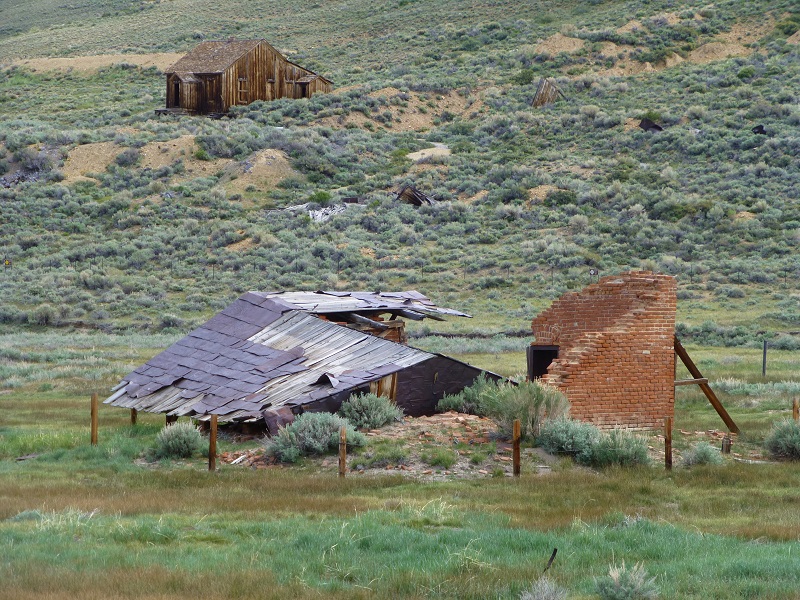 It was time to go to jail. The Bodie Jail was built in 1877 and cost about $800. It’s approximately 14’x18′ and has two cells in it and each had a wood stove in them.
It was time to go to jail. The Bodie Jail was built in 1877 and cost about $800. It’s approximately 14’x18′ and has two cells in it and each had a wood stove in them.
We stopped by what is left of the Bodie Bank. J.S. Cain bought the bank in 1890 from E. L. Benedict. The bank survived the fire in 1892 but was not as lucky in the 1932 fire that destroyed a huge part of town. Although the bank was completely destroyed, it is said that none of the valuables inside the safe were damaged.
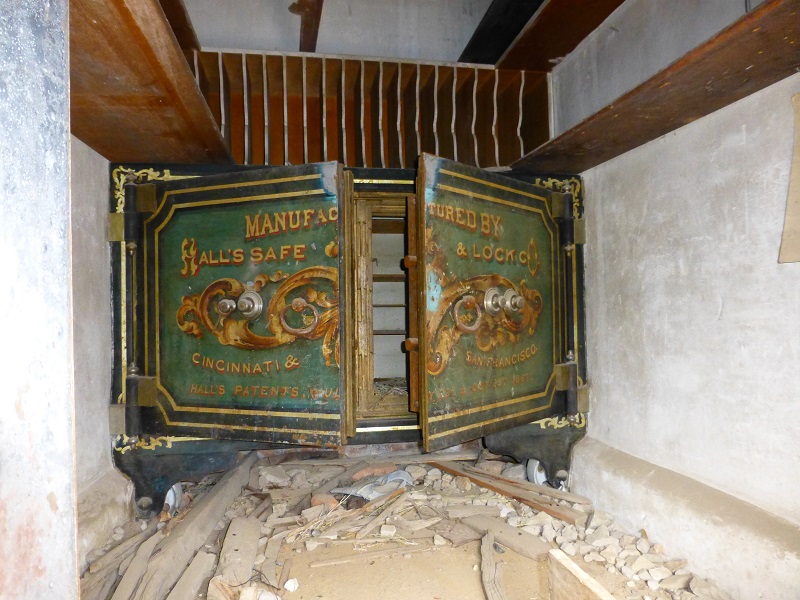 We wandered along the streets, looking at the houses. It seemed like each one of them had some type of unique detail to them.
We wandered along the streets, looking at the houses. It seemed like each one of them had some type of unique detail to them.
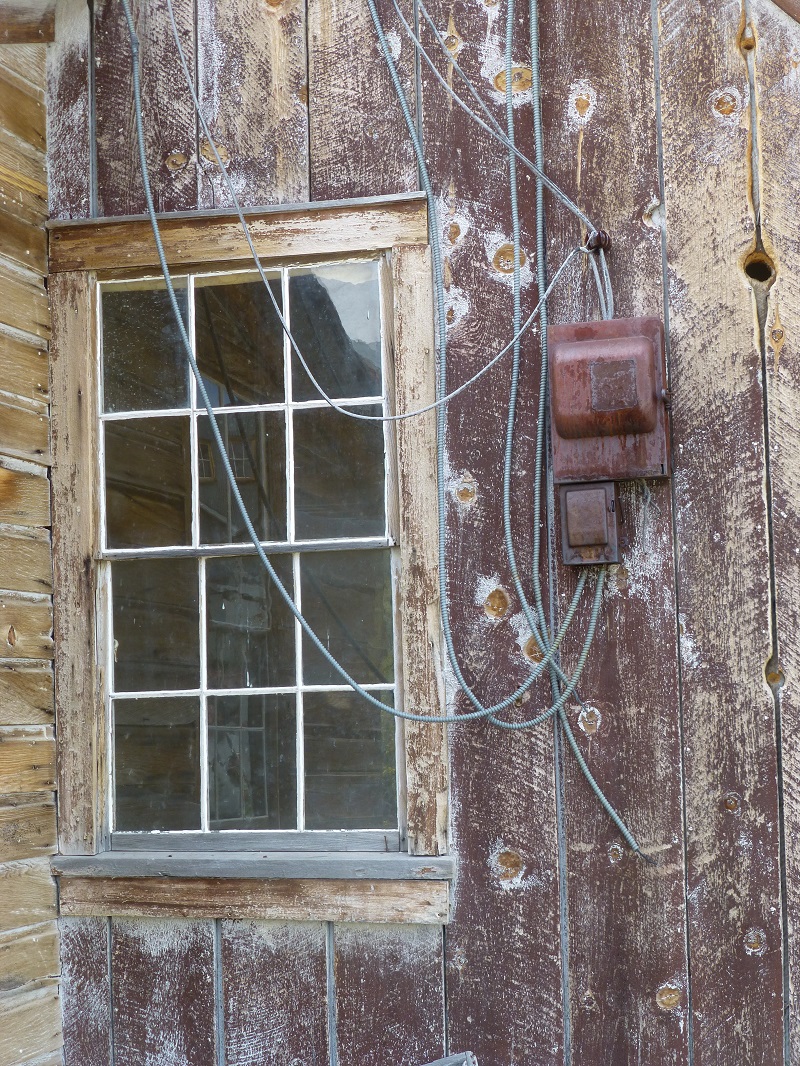 Then we headed over to a tour of the Standard Stamp Mill. In 1892, the Standard Company built its own hydroelectrical plant on Green Creek, about 13 miles away. The plant developed a maximum of 130 horsepower (97 kW) and 3,530 volts alternating current (AC) to power the company’s 20-stamp mill. This was one of the country’s first transmissions of electricity over a long distance.
Then we headed over to a tour of the Standard Stamp Mill. In 1892, the Standard Company built its own hydroelectrical plant on Green Creek, about 13 miles away. The plant developed a maximum of 130 horsepower (97 kW) and 3,530 volts alternating current (AC) to power the company’s 20-stamp mill. This was one of the country’s first transmissions of electricity over a long distance.
We headed over to the Dechambeau Hotel. I did a little research and learned that the widow Marion Alena Dechambeau ran the Boarding House that was also known as the Dechambeau Hotel. Marion had been born in Canada in 1840, marrying Louis Winslow DeChambeau in 1859. California Voter Registration records show that he was naturalized in Lander County, Nevada in 1876 so I think there is a good possibility that they came to the United States together then. On the 1900 census, Marion says that she is divorced and Proprietor of a Lodging House. Researchers show that Louis Winslow Dechambeau returned to Canada where he died in 1907. On the 1910 census, she is shown living in Bodie, a widow and Landlady at a Hotel. Marion died in 1917 at Mono Lake and the Hotel was taken over by Bodie Mike aka Mike Lazovitch until 1920. He later moved his bar that was located there to Lee Vining. Now I don’t know if Marion and Louis were ever officially divorced. I located Louis’s death record in Quebec, Canada and it says that he was the spouse of Marion, nothing about a divorce.
From James Watson and Doug Brodie’s book, Big Bad Bodie: High Sierra Ghost Town, he shares that Marion’s grandson remembered that there were 3 apartments on the bottom floor that were rented to men with families and the second floor had 12 apartments rented to single miners.
If I had been a guest back in 1880, I could imagine how it must have felt to enter the hotel on a cold Bodie day, warming up by the woodstove, getting a hearty meal in my stomach. Lookie here, a special today for Liver & Onions only 25 cents! Perhaps something from the bar to wet my whistle. . .
Walking down the hall, I might have stayed in one of these rooms.
The Hotel had all of the modern conveniences with indoor plumbing and I would definitely gone for the bath in the wooden bath tub.
Over to the schoolhouse, which was built in 1879.
The desks were lined up for our lesson.
But I could also imagine the students watching the clock and looking out the window in anticipation for when school would let out.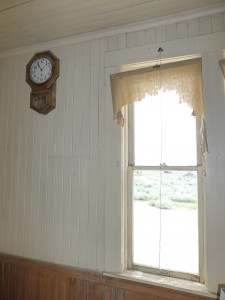
It was time for lunch and we quickly ate up, looking forward to the next parts of our tour. Several people had expressed interest in visiting the cemetery so we made a short stop of there. Someone asked Terri where W.S. Bodie was buried, the person who the town is named after. Terri showed us the marker for William aka Waterman Bodie, but this wasn’t where he was buried. She shared with us recent efforts with specialized dogs to locate unmarked graves. They were highly successful, locating many. Along with clues and with the help of the dogs, Terri believes they have located the actual grave of W.S. Bodey, which had been moved from its original burial location back when Bodie was a thriving town. The Bodie Foundation is currently raising money to help bring the dogs back in to locate more graves, perhaps even the old Chinese Cemetery.
The next part of our tour was up to the Bodie Bluffs and this was new territory to me. I was very curious to get a closer look at the mines. As we passed by the mines, there were small dugout structures and Terri explained to us that some of the miners lived in these.
The view of the town was so nice from up here. We stood by the two ponds, which were utilized as water for the fire hydrant system and for ice.
As we got closer to the Railroad Office, the old water tower was sillouetted.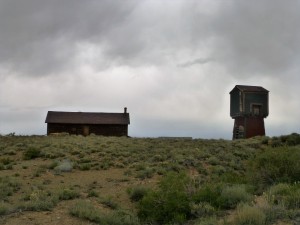
We reached the building that many refer to as the Railroad Station but Terri explained that it was more of a railroad office for the Bodie Railway & Lumber Company that provided the milled lumber and cordwood for Bodie. The wood was milled at Mono Mills and transported some 32 miles on a narrow gauge railroad soley for that purpose. It wasn’t normally used to transport passengers.
Check out the detail in the old wallpaper. How appropriate for a railroad office.
As we looked out, we could trace the route of the old railroad route up toward the Railroad Office and on up to the top of the hill through some switchbacks where it delivered its load, then turned around to head back to Mono Mills.
Since our second day’s part of the tour was cancelled due to the weather, I knew where I needed to go on my way home and that was to visit Mono Mills. Since I had seen the end of the line for the railroad, it just felt right to visit the beginning of the line. I took Hwy 395 south to Hwy 120 East about 9 miles to the historic site. This is where the lumber was milled and slid down to the flatcars for its travel to Bodie.
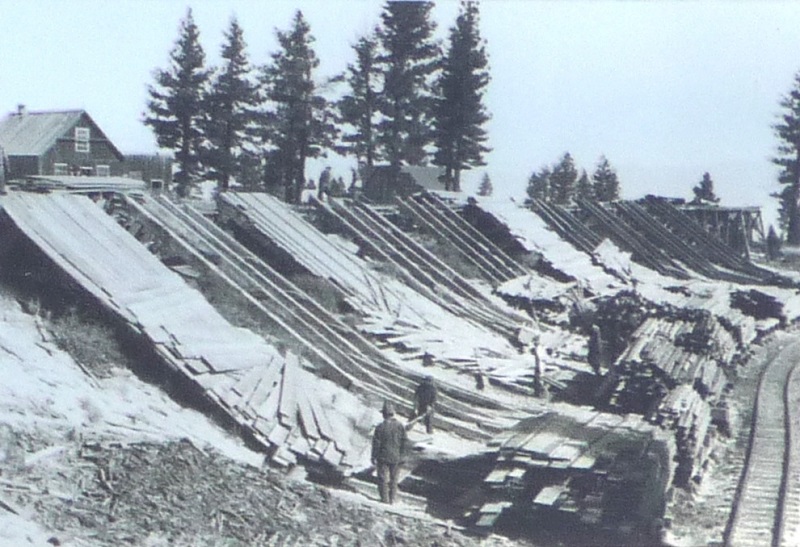 And here is what the site looks like today.
And here is what the site looks like today.
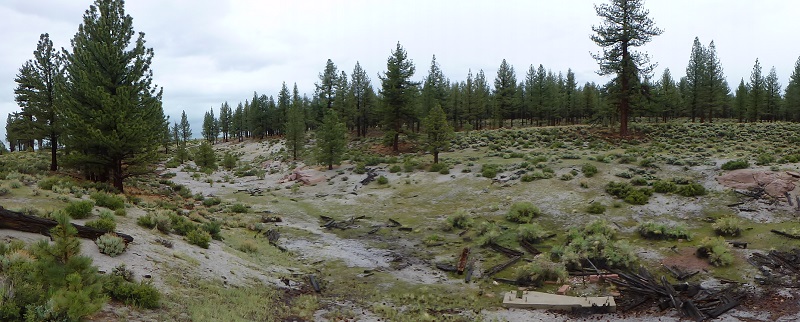 I’m looking forward to getting over to Masonic one of these days and better understanding the relationship between the nearby mines to these ghost towns. I also look forward to going on another Heritage Tour down the line also. I learned so much about Bodie, its people and the impact that this community had. Bodie’s reach and impact was much greater than it may seem on the surface. I owe a big thank you to Terri Geissler, the Bodie Foundation and Bodie.com for the historical background on the structures that I discussed in this blog. I also thank you for your dedication to keeping Bodie alive for us.
I’m looking forward to getting over to Masonic one of these days and better understanding the relationship between the nearby mines to these ghost towns. I also look forward to going on another Heritage Tour down the line also. I learned so much about Bodie, its people and the impact that this community had. Bodie’s reach and impact was much greater than it may seem on the surface. I owe a big thank you to Terri Geissler, the Bodie Foundation and Bodie.com for the historical background on the structures that I discussed in this blog. I also thank you for your dedication to keeping Bodie alive for us.
Sources:
Bodie Foundation Current Projects
Watson, James, Big Bad Bodie: High Sierra Ghost Town, Robert Reed Publishers, 2010
Prior Blogs in the Area:

